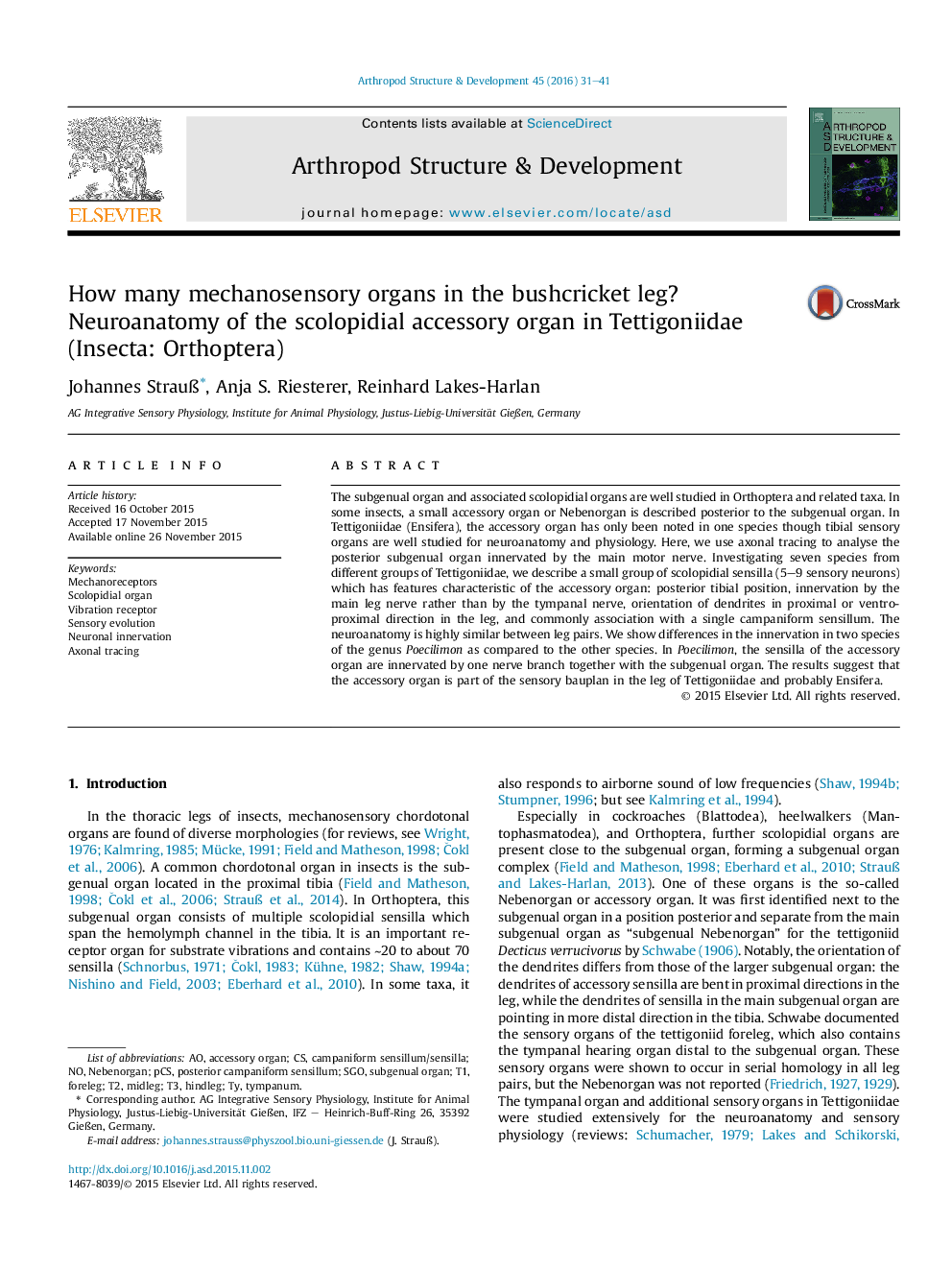| Article ID | Journal | Published Year | Pages | File Type |
|---|---|---|---|---|
| 2778563 | Arthropod Structure & Development | 2016 | 11 Pages |
•The accessory organ is described in the legs of 7 species of Tettigoniidae.•It is located closer to the adjacent subgenual organ than in other Ensifera.•The position in the leg and the structure of sensilla is highly similar to most Ensifera.•The accessory organ is a small organ with 5–9 scolopidial sensilla.•We report evolutionary changes in the innervation pattern within Tettigoniidae.
The subgenual organ and associated scolopidial organs are well studied in Orthoptera and related taxa. In some insects, a small accessory organ or Nebenorgan is described posterior to the subgenual organ. In Tettigoniidae (Ensifera), the accessory organ has only been noted in one species though tibial sensory organs are well studied for neuroanatomy and physiology. Here, we use axonal tracing to analyse the posterior subgenual organ innervated by the main motor nerve. Investigating seven species from different groups of Tettigoniidae, we describe a small group of scolopidial sensilla (5–9 sensory neurons) which has features characteristic of the accessory organ: posterior tibial position, innervation by the main leg nerve rather than by the tympanal nerve, orientation of dendrites in proximal or ventro-proximal direction in the leg, and commonly association with a single campaniform sensillum. The neuroanatomy is highly similar between leg pairs. We show differences in the innervation in two species of the genus Poecilimon as compared to the other species. In Poecilimon, the sensilla of the accessory organ are innervated by one nerve branch together with the subgenual organ. The results suggest that the accessory organ is part of the sensory bauplan in the leg of Tettigoniidae and probably Ensifera.
Graphical abstractFigure optionsDownload full-size imageDownload as PowerPoint slide
